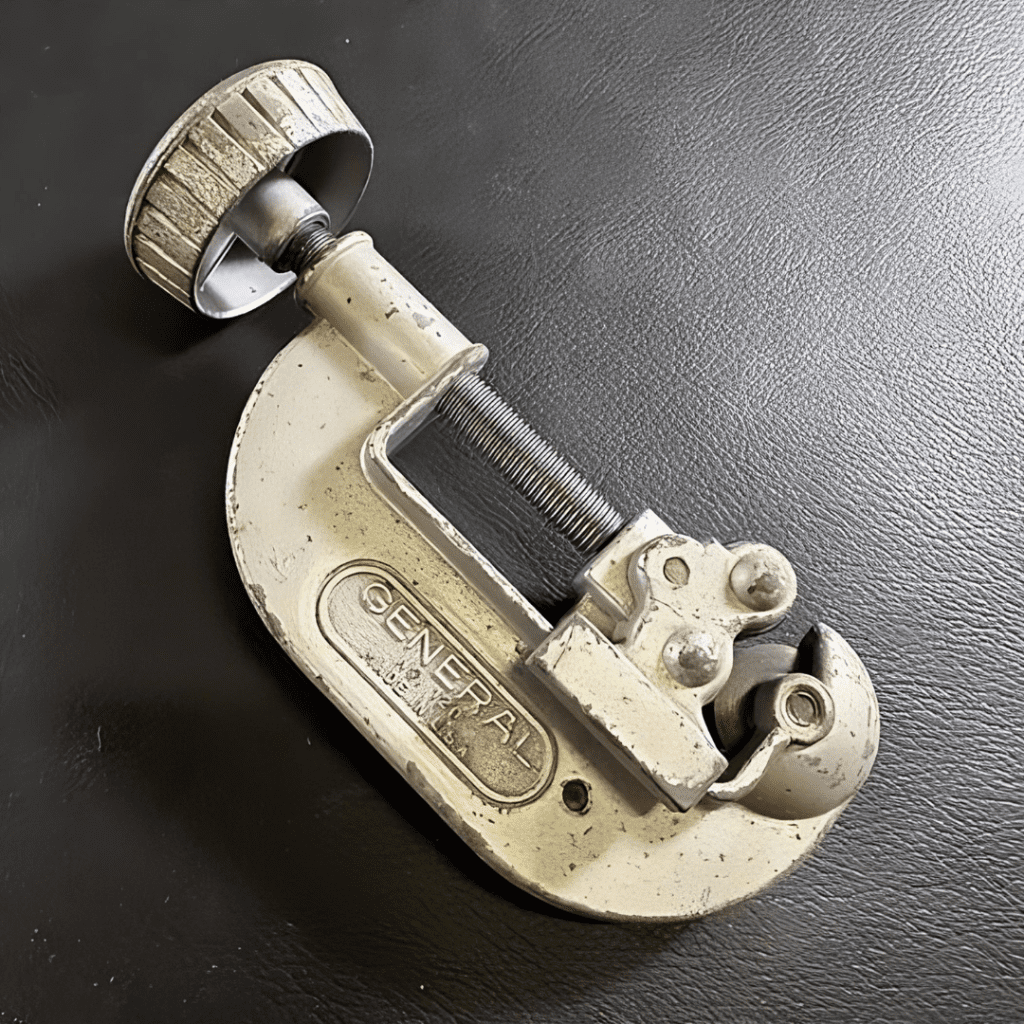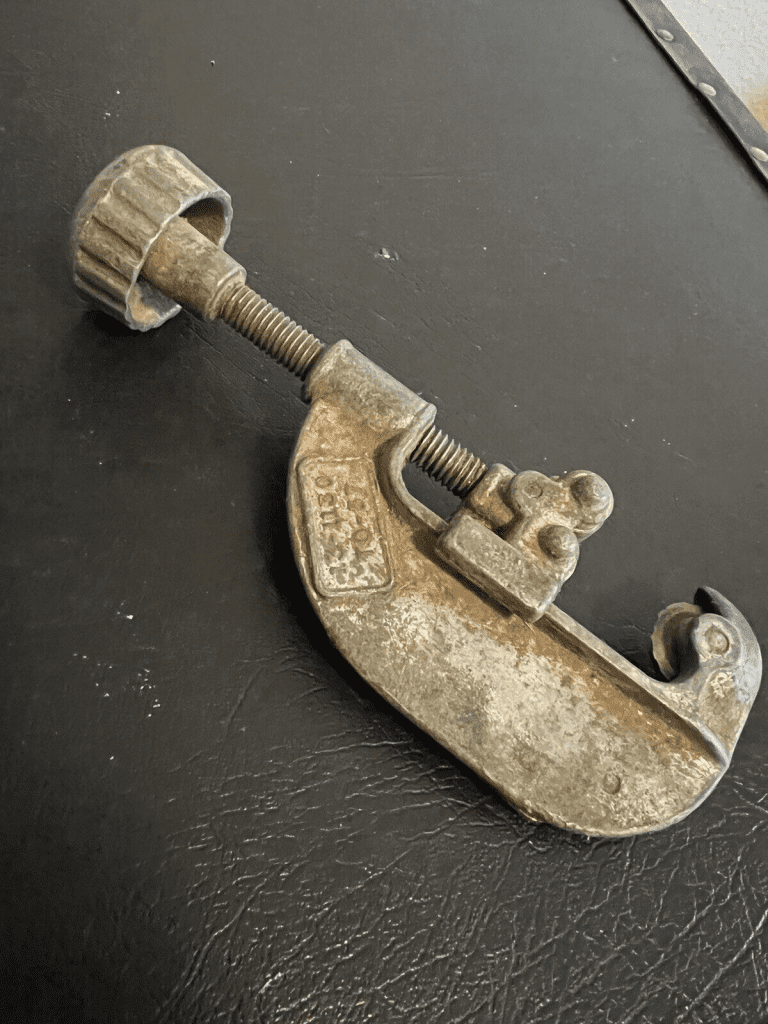History
The vintage aluminium tubing pipe cutter tool stands as a testament to the skilled craftsmanship of the mid-20th century. These tools, with their sleek and functional design, embody the era’s emphasis on practicality, durability, and attention to detail.
The vintage pipe cutter’s history is intrinsically tied to the evolution of plumbing and metalworking technologies. The aluminium construction of these cutters not only provided lightweight portability but also offered a robust and corrosion-resistant solution for the demands of the industry.
Today, the vintage aluminium tubing pipe cutter tool continues to captivate collectors and enthusiasts alike. Its timeless design and enduring functionality have earned it a place in the pantheon of mid-century engineering marvels. Beyond its practical applications, these tools have become symbols of a bygone era, representing the ingenuity and craftsmanship that defined a pivotal period in industrial history.

Usage
Designed for precision and ease of use, the vintage aluminium tubing pipe cutter was indispensable in cutting various types of metal tubing, particularly copper, aluminium, and steel.
Its straightforward operation involved securing the pipe within the tool’s adjustable clamp, then rotating the cutter around the pipe while gradually tightening the cutting wheel until the pipe was cleanly severed. This method ensured a smooth, burr-free cut, essential for maintaining the integrity of the piping system and ensuring leak-free connections.
Key Features:
- Adjustable Clamp: Secures the pipe in place for precise cutting.
- Rotating Cutting Wheel: Gradually tightens around the pipe, ensuring a clean cut.
- Lightweight Aluminium Construction: Easy to handle and resistant to corrosion.
Legacy
The legacy of the vintage aluminium tubing pipe cutter is seen in its enduring influence on modern plumbing and metalworking tools. Despite the advent of more advanced and automated cutting technologies, the basic design principles of these vintage tools remain unchanged. They epitomize a blend of functionality, durability, and simplicity, qualities that continue to inspire contemporary tool design.

Collectors and enthusiasts value these vintage tools not only for their practical utility but also for their historical significance. Many of these cutters are still in use today, testament to their robust construction and the timeless nature of their design. They serve as a nostalgic reminder of a time when manual skill and craftsmanship were paramount.
Conclusion
The vintage aluminium tubing pipe cutter tool stands as a symbol of mid-20th century ingenuity and craftsmanship. Its history reflects a period of significant industrial growth and innovation, its usage demonstrates the practical efficiency of its design, and its legacy endures in the continued appreciation and use of these reliable tools. Whether in the hands of a collector or a craftsman, the vintage aluminium tubing pipe cutter remains a cherished piece of industrial history.